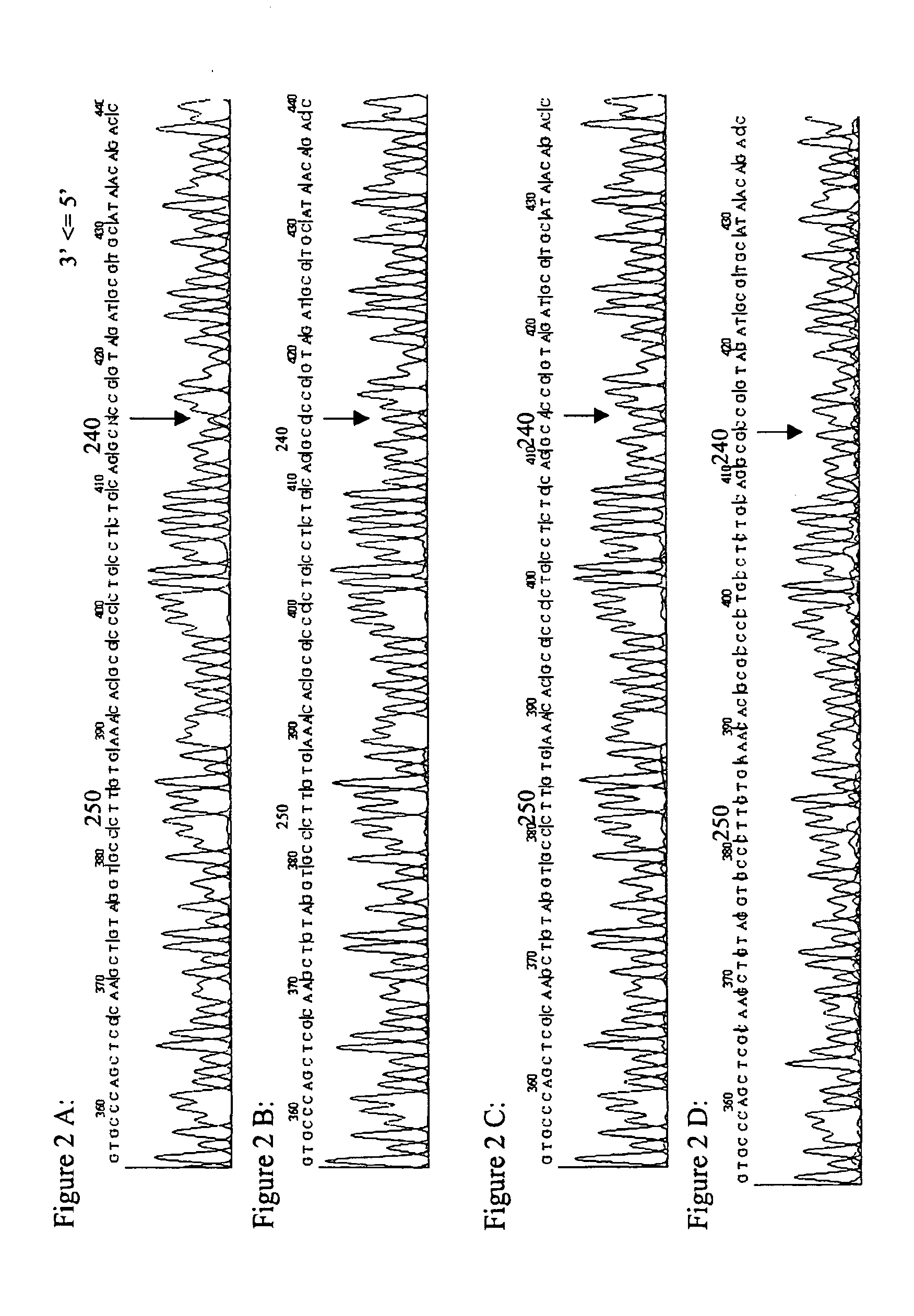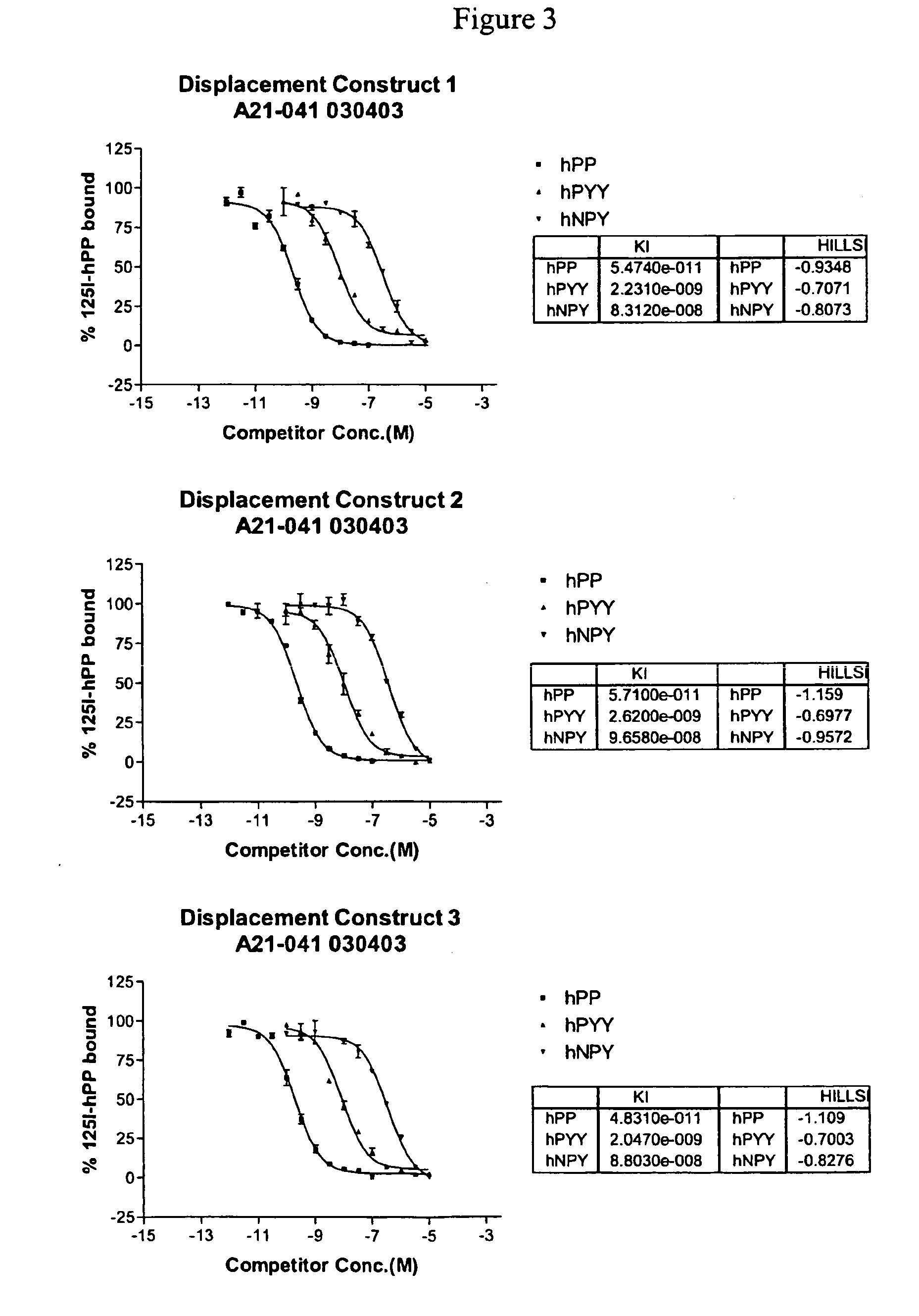Human obesity susceptibility gene and uses thereof
a human obesity and susceptibility gene technology, applied in the field of genetics and medicine, can solve the problems of obesity susceptibility, increased health risks, and increased risk of abdominal fat distribution, and achieve the effect of relating to susceptibility to obesity
- Summary
- Abstract
- Description
- Claims
- Application Information
AI Technical Summary
Problems solved by technology
Method used
Image
Examples
examples
1. Identification of an Obesity Susceptibility Locus on Human Chromosome 10
[0126] A. Linkage Studies
[0127] Hager et al. (1998) first identified a locus on human chromosome 10 linked to massive human obesity. The linkage study showed evidence for linkage between markers D10S191 and D10S220 with a MLS maximum at marker D10S197. The whole region covered an interval of approximately 39 centimorgan.
[0128] The locus on chromosome 10p may account for 21-36% of the obesity in the study group analysed by the French group (Hager et al., 1998).
[0129] Hinney at al. (2000) replicated the linkage to chromosome 10. For this purpose, 94 German families with two obese children were genotyped for 12 microsatellite markers in the region previously identified by Hager et al. (1998). The MLS is 2.3. A further study (Price R A, 2001) independently confirmed linkage of this locus in an American population. It is therefore currently safe to conclude that a substantial number of obese families harbour ...
PUM
| Property | Measurement | Unit |
|---|---|---|
| weight loss | aaaaa | aaaaa |
| temperatures | aaaaa | aaaaa |
| temperatures | aaaaa | aaaaa |
Abstract
Description
Claims
Application Information
 Login to View More
Login to View More - R&D
- Intellectual Property
- Life Sciences
- Materials
- Tech Scout
- Unparalleled Data Quality
- Higher Quality Content
- 60% Fewer Hallucinations
Browse by: Latest US Patents, China's latest patents, Technical Efficacy Thesaurus, Application Domain, Technology Topic, Popular Technical Reports.
© 2025 PatSnap. All rights reserved.Legal|Privacy policy|Modern Slavery Act Transparency Statement|Sitemap|About US| Contact US: help@patsnap.com



